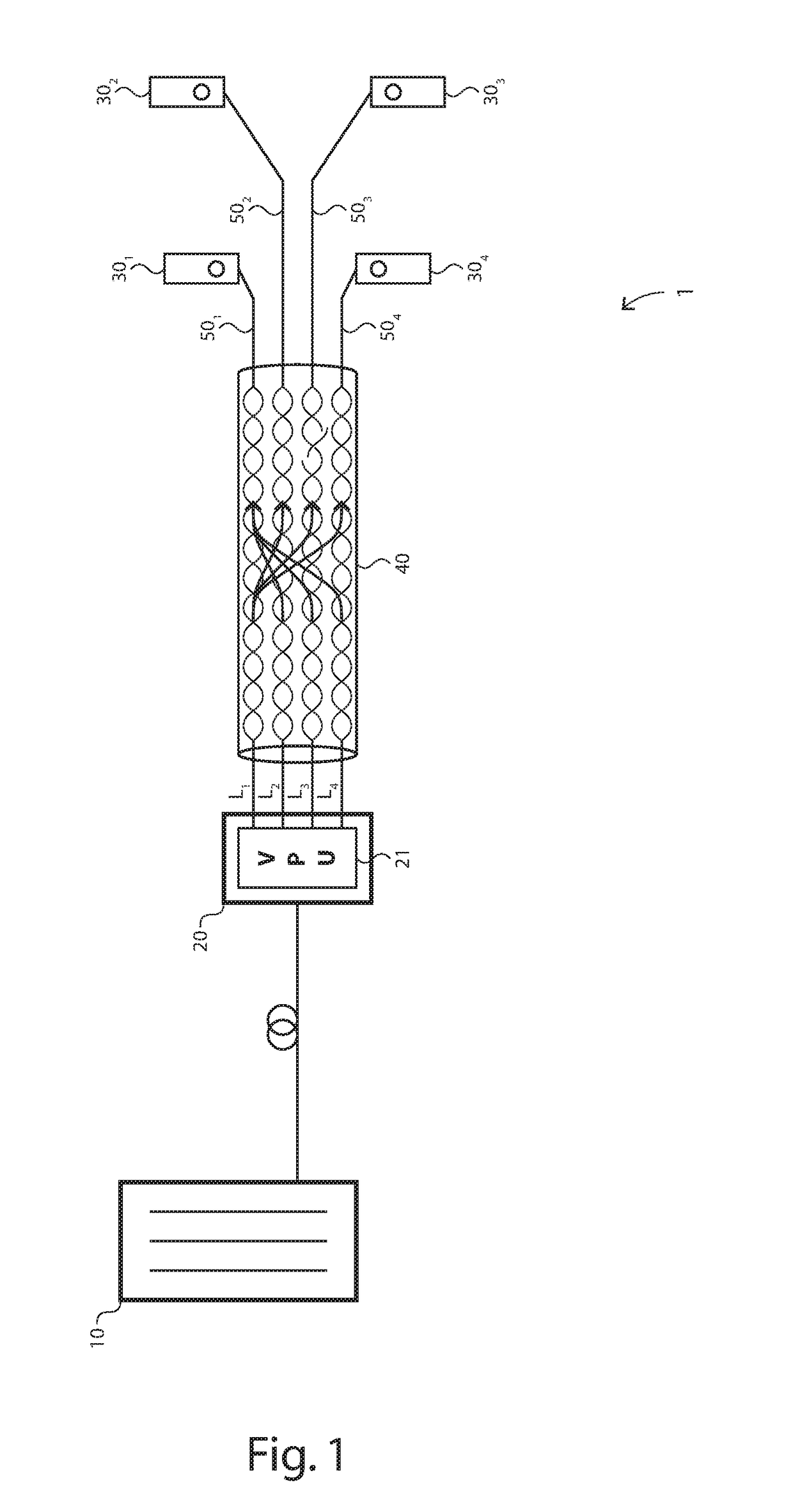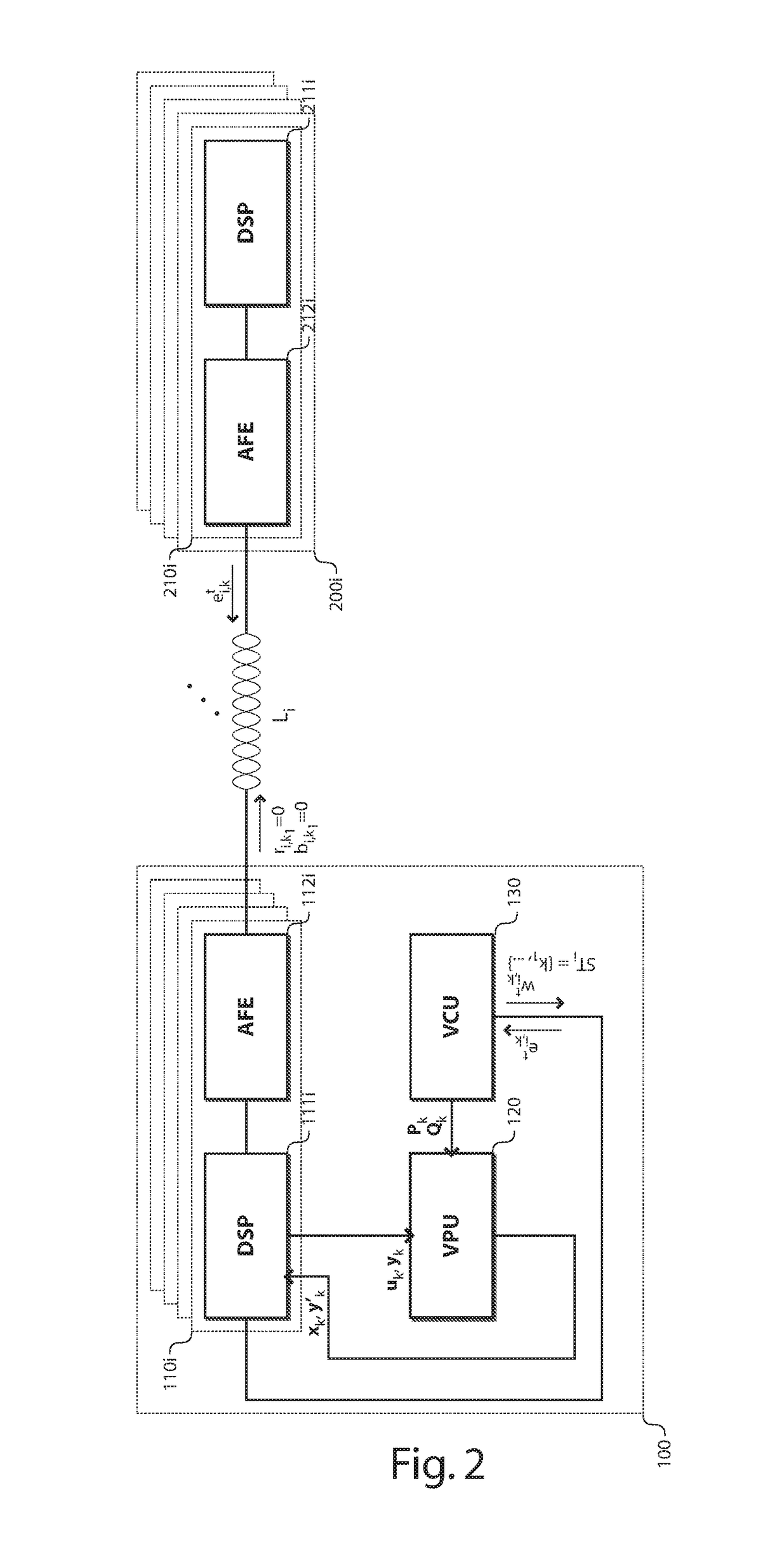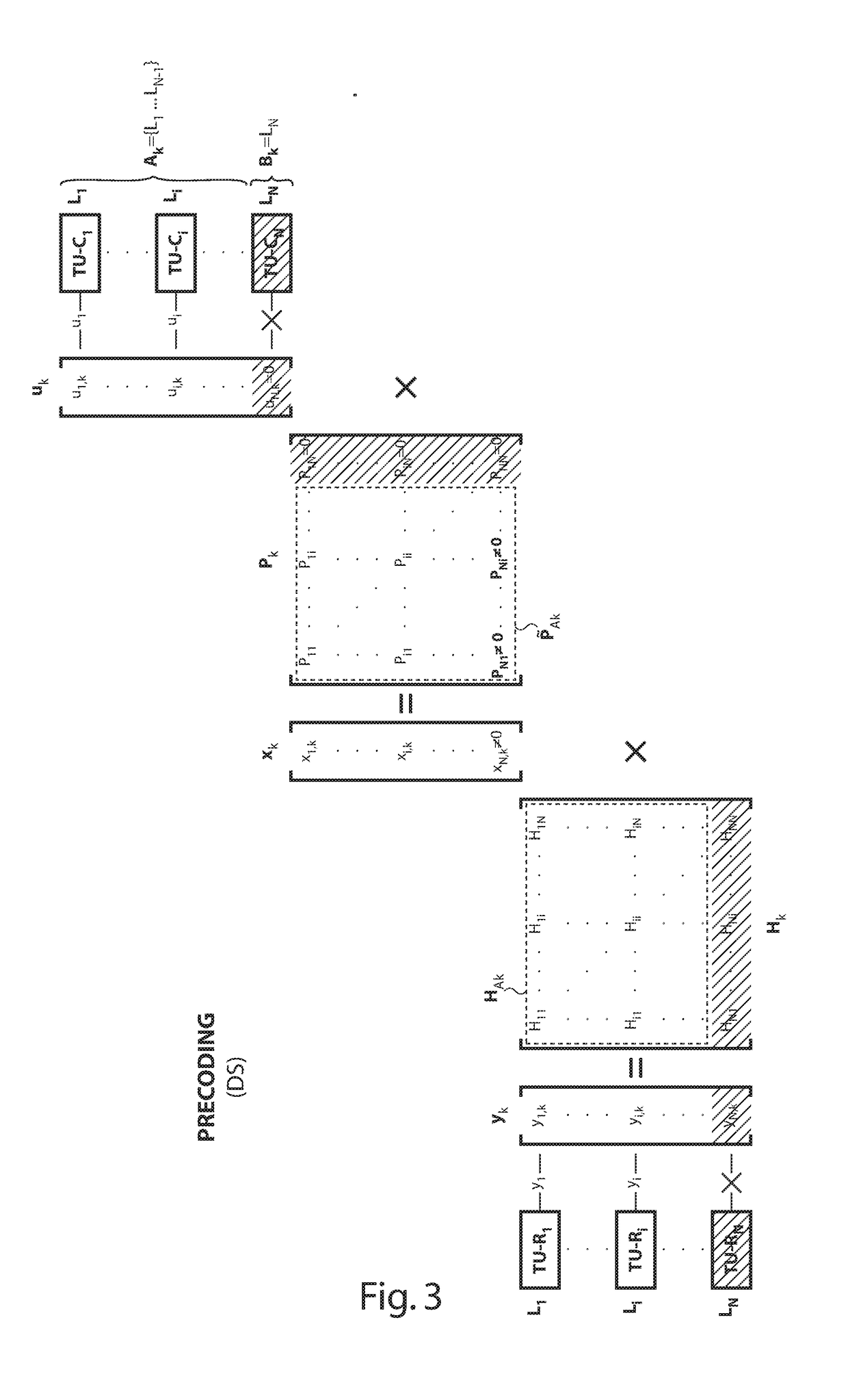Targeted rectangular conditioning
a rectangular conditioning and target technology, applied in line-transmission, line-transmission details, orthogonal multiplexes, etc., can solve the problems of severe signal distortion, limited vectoring gains, and significant computational complexity of linear precoding
- Summary
- Abstract
- Description
- Claims
- Application Information
AI Technical Summary
Benefits of technology
Problems solved by technology
Method used
Image
Examples
Embodiment Construction
[0059]The square brackets hereinafter surround terms that are deemed to be optional, and thus an expression such as e.g. “the [normalized] channel matrix” shall be construed as either “the channel matrix” or “the normalized channel matrix”.
[0060]There is seen in FIG. 1 an access plant 1 comprising a network unit 10 at a co, an access node 20 coupled via one or more optical fibers to the network unit 10, and further coupled via a copper plant to Customer Premises Equipment (CPE) 30 at various subscriber locations. The transmission media of the copper plant is typically composed of copper Unshielded Twisted Pairs (UTP).
[0061]As an illustrative example, the copper plant comprises four subscriber lines L1 to L4 sharing a common access segment 40, and then going through dedicated loop segments 50 for final connection to CPEs 301 to 304 respectively.
[0062]Within the common access segment 40, the subscriber lines L1 to L4 are in close vicinity and thus induce crosstalk into each other (see...
PUM
 Login to View More
Login to View More Abstract
Description
Claims
Application Information
 Login to View More
Login to View More - R&D
- Intellectual Property
- Life Sciences
- Materials
- Tech Scout
- Unparalleled Data Quality
- Higher Quality Content
- 60% Fewer Hallucinations
Browse by: Latest US Patents, China's latest patents, Technical Efficacy Thesaurus, Application Domain, Technology Topic, Popular Technical Reports.
© 2025 PatSnap. All rights reserved.Legal|Privacy policy|Modern Slavery Act Transparency Statement|Sitemap|About US| Contact US: help@patsnap.com



